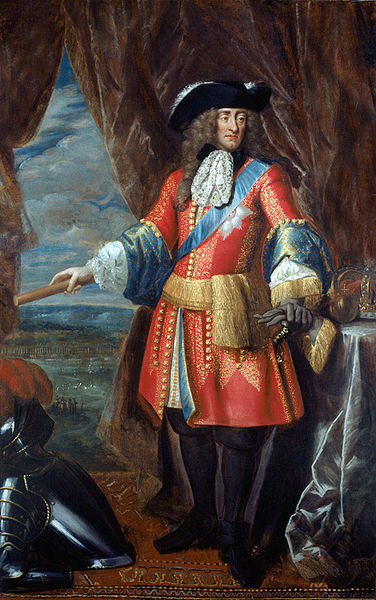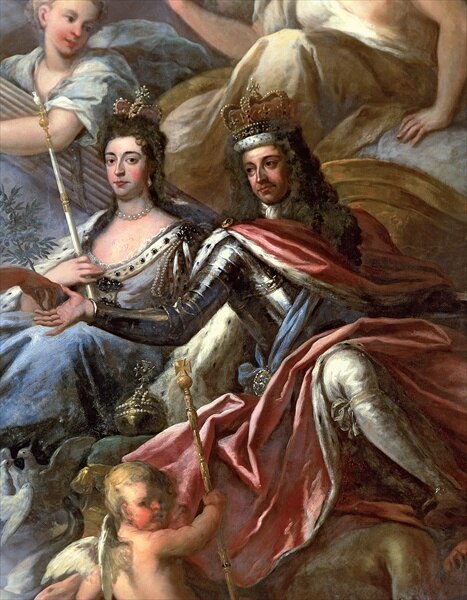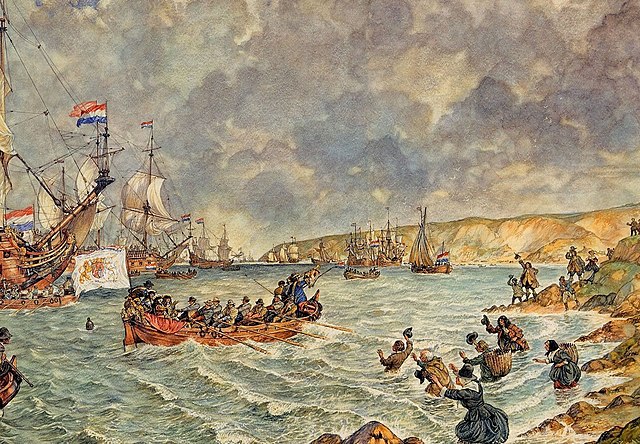Glorious Revolution in Scotland
The Glorious Revolution in Scotland refers to the Scottish element of the 1688 Glorious Revolution, in which James VII was replaced by his daughter Mary II and her husband William III as joint monarchs of Scotland and England. Prior to 1707, the two kingdoms shared a common monarch but were separate legal entities, so decisions in one did not bind the other. In both countries, the Revolution confirmed the primacy of Parliament over the Crown, while the Church of Scotland was re-established as a Presbyterian rather than Episcopalian polity.
James VII, who was deposed in 1688
James VII & II c. 1685 as Army Commander
William III and Mary II depicted on the ceiling of the Painted Hall, Greenwich.
Parliament House, where the Convention of Estates met in March 1689
The Glorious Revolution is the sequence of events that led to the deposition of James II and VII in November 1688. He was replaced by his daughter Mary II and her Dutch husband, William III of Orange, who was also his nephew. The two ruled as joint monarchs of England, Scotland, and Ireland until Mary's death in 1694. The Revolution itself was relatively bloodless, but pro-Stuart revolts between 1689 and 1746 caused significant casualties, while the political movement known as Jacobitism persisted into the late 18th century. William's invasion was the last successful invasion of England.
The Prince of Orange landing at Torbay as depicted in an illustration by Jan Hoynck van Papendrecht
James II & VII, King of England, Scotland and Ireland, by Godfrey Kneller, National Portrait Gallery, London
James's attempts to allow tolerance for English Catholics coincided with the October 1685 Edict of Fontainebleau revoking it for Huguenots.
The Seven Bishops prosecuted for seditious libel in 1688








